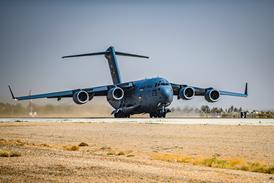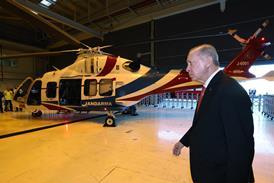Etihad Airways is celebrating its fourth birthday at the show – and chief executive James Hogan says no commercial airline in history has ever achieved Etihad’s rate of growth in such a short period of time.
“Etihad has grown at an incredible speed and with a real sense of purpose since it was formed in 2003. We have introduced a fleet of state-of-the-art aircraft, a flight network of 45 global destinations and a workforce of more than 4,500 staff around the world.”
And the Abu Dhabi airline still has ambitious future expansion plans. Hogan, who recently passed his first anniversary at the helm, was speaking at a pre-show event at the European Aviation Club. “The Arabian Gulf is now the fastest growing aviation hub in the world,” he says. “The Arabian Gulf airlines play a central role in attracting the growing numbers of business and leisure travellers who visit the region every year. Furthermore as the markets of Asia and the Far East continue to grow, Etihad and the other regional airlines will carry greater numbers of travellers between the East and West. No commercial airline in the history of aviation has ever achieved that rate of growth.”
The airline is celebrating its fourth anniversary of the inaugural flight from its home base of Abu Dhabi to Al Ain in 2003 was marked a week later by the first commercial flight to Beirut. “Now we are looking for further, measured growth in the future, as well as the development of our brand into the best in the world,” Hogan says.
In its brief four-year existence, the airline has expanded rapidly and currently boasts a fleet of 34 aircraft serving the Middle East, Europe, North America, Africa and Asia. “The past year at Etihad has been another of significant expansion with growth of our route network, aircraft fleet, passenger figures and number of employees,” says Hogan. “The awards that we have picked up in 2007 are further evidence of the strength of our product and the service we offer to our customers.”
So far this year, the airline has carried more than 3.7 million passengers and expects to carry more than 4.5m passengers by the end of 2007, with average seat factors forecast to be 68%. The number of passengers has grown from 340,000 in 2004 to 1m in 2005 and 2.8m in 2006.
Nine new routes have been added to the airline’s global network during 2007 alone: Milan, Dublin, Sydney, Brisbane, Kuala Lumpur, Singapore, Kochi and Thiruvananthapuram in India, and, most recently, Kathmandu, the capital of Nepal.
The airline has also recently boosted its number of weekly flights from 556 to 718 as part of an expanded winter schedule introduced on October 28. The 29% increase in flights compared to last winter has improved access to 16 routes across Etihad’s global network including Bahrain, where services have doubled from 14 to 28 flights a week and Muscat, where they have trebled from seven to 21 flights a week.
Etihad Airways has continued to expand its aircraft fleet during 2007 and it remains one of the youngest passenger fleets in the world with an average age of 2.2 years. Its widebody fleet, including three freighter aircraft, now comprises 32 aircraft and will grow to 34 by the end of the year with delivery of a further two Airbus A340-600 aircraft. The narrowbody fleet of Airbus A320 aircraft is set to grow to four by the end of 2007.
Hogan adds: “We have much to look forward to in the fifth year of commercial operations, including the move to a new, dedicated passenger terminal at Abu Dhabi airport. Next year will also see us move to new headquarters, complete with state-of-the-art training facilities for flying crew. Our fourth year has been remarkable and I have every confidence our fifth with be every bit as exciting.”
Back to the rest of Dubai 2007 show news, blogs, and pictures
Source: Flight Daily News























